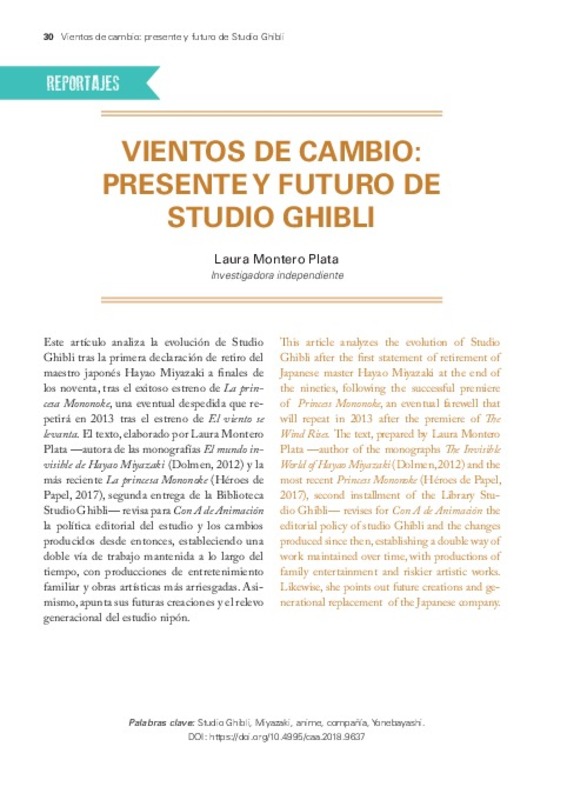JavaScript is disabled for your browser. Some features of this site may not work without it.
Buscar en RiuNet
Listar
Mi cuenta
Estadísticas
Ayuda RiuNet
Admin. UPV
Vientos de cambio: presente y futuro de Studio Ghibli
Mostrar el registro completo del ítem
Montero Plata, L. (2018). Vientos de cambio: presente y futuro de Studio Ghibli. Con A de Animación. (8):30-37. https://doi.org/10.4995/caa.2018.9637
Por favor, use este identificador para citar o enlazar este ítem: http://hdl.handle.net/10251/100150
Ficheros en el ítem
Metadatos del ítem
| Título: | Vientos de cambio: presente y futuro de Studio Ghibli | |
| Autor: | Montero Plata, Laura | |
| Fecha difusión: |
|
|
| Resumen: |
[EN] This article analyzes the evolution of Studio Ghibli after the first statement of retirement of Japanese master Hayao Miyazaki at the end of the nineties, following the successful premiere of Princess Mononoke, an ...[+]
[ES] Este artículo analiza la evolución de Studio Ghibli tras la primera declaración de retiro del maestro japonés Hayao Miyazaki a finales de los noventa, tras el exitoso estreno de La princesa Mononoke, una eventual ...[+]
|
|
| Palabras clave: |
|
|
| Derechos de uso: | Reconocimiento - No comercial - Sin obra derivada (by-nc-nd) | |
| Fuente: |
|
|
| DOI: |
|
|
| Editorial: |
|
|
| Versión del editor: | https://doi.org/10.4995/caa.2018.9637 | |
| Tipo: |
|








